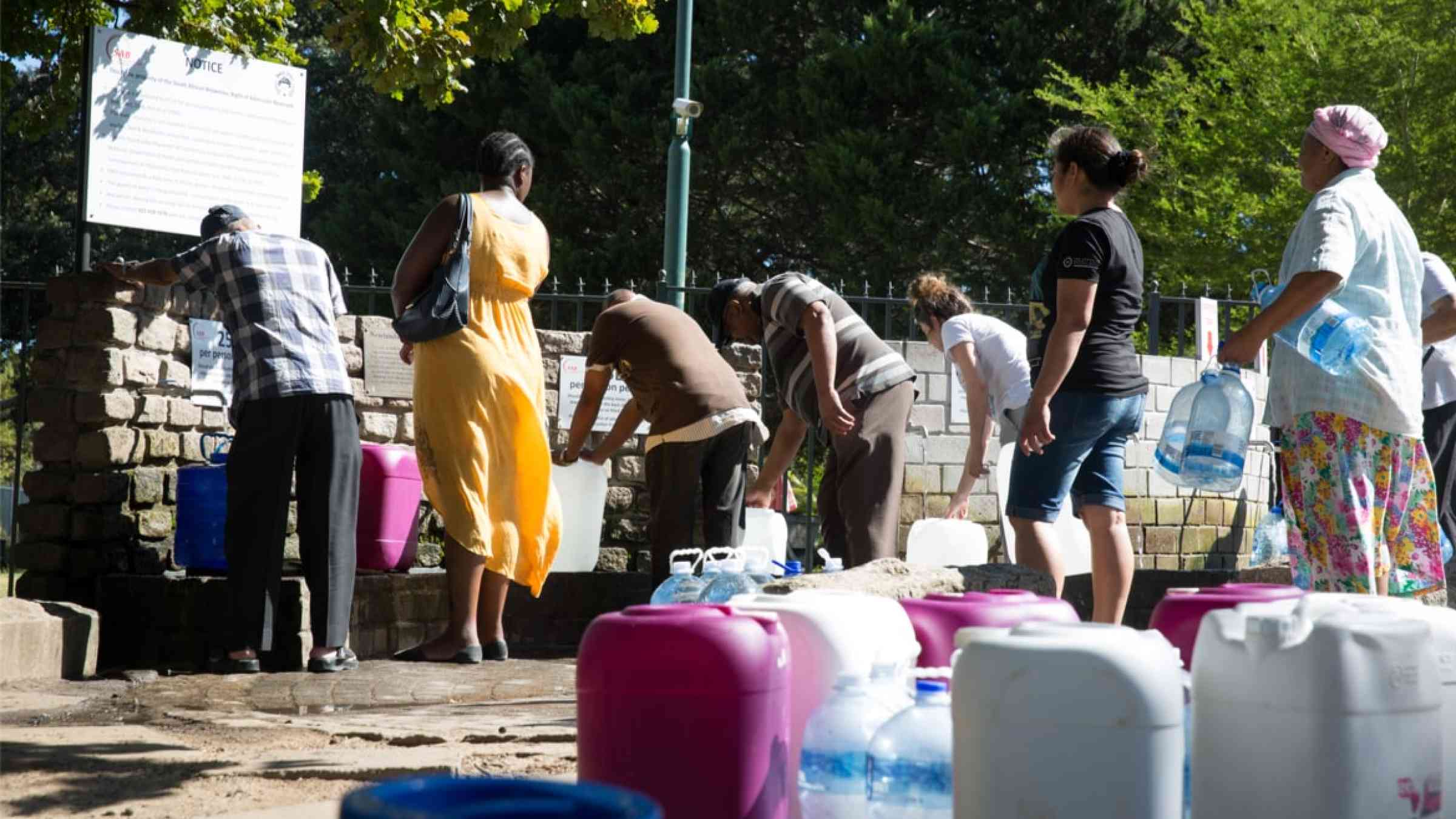Latest IPCC report highlights how climate change is causing extreme events and exacerbating risks of floods and droughts

Extreme weather events are slamming the globe. In July, we saw catastrophic floods hit India, China and Europe. The ongoing famine caused by climate-induced drought in Madagascar has affected over a million people. More people than ever before are experiencing climate change daily, and much of that is experience through water related changes.
The new IPCC Working Group I report, which explores the physical science underpinning past, present, and future climate change, addresses some of the most critical questions of recent years. Are these extreme events linked to climate change, and are they increasing? Is climate change modifying the global water cycle? And what is causing climate change in the first place?
The IPCC WGI Report, approved at the plenary session on August 9th, drilled down into these questions. These are our top eight takeaways on water and extreme events based on the report’s findings.
- The WGI Report reiterates what we have now known for a while: that humans are driving a rise in temperature, thanks to carbon and other greenhouse gas emissions. Currently, the global surface temperature is around 1.09°C higher than in the pre-industrial period (1850-1900), with stronger warming over land (1.59°C) than over oceans. Several of the climate impacts are already observed at 1.09°C, and these impacts will intensify at higher temperature levels.
- Every degree of global warming is likely to increase global mean precipitation by around 1% to 3%. A hotter planet is a wetter planet because a warmer climate increases the moisture content in the atmosphere and feeds into weather systems, making wet events wetter.
- The frequency and intensity of heavy precipitation events of the kind we have recently seen in Germany and China have increased at a global scale. This is especially true for North America, Europe and Asia, where long term observational data exists. Every degree of global warming will further intensify such extreme precipitation events. For example, extreme precipitation events that happened once in 10 years in a pre-industrial world (that is a world without human influence on climate), now (at 1.09°C) likely occurs 1.3 times in 10 years, and its incidence is likely to increase to 2.8 times every 10 years at a 4°C world.
- As extreme precipitation events increase, so too will the frequency and magnitude of surface water floods and flash floods. This is because when there’s high precipitation, the natural and artificial drainage systems cannot hold the excess water. As a result, a large amount of land is projected to be affected by river floods in the future, increasing with every degree of global warming.
- A warmer, wetter world is also subject to increased evaporation leading to decreases in soil moisture and the likelihood of more droughts. For example, greater warming over the land surface reduces near-surface humidity on a continental scale, which contributes to drying at a regional scale. At 4°C of global warming, about 50 percent of all land areas will see increased frequency and severity of droughts. Even if global temperatures stabilize at an average increase of between 1.5°C to 2°C above pre-industrial levels, several regions, including South Asia, East, West and Southern Africa, will experience severe droughts. These also tend to be the places where a large majority of the poor people live and depend on rainfed agriculture for their livelihoods. Risks of forest fires also increase with temperature rise and droughts.
- One of the most exciting scientific advances in the IPCC Sixth Assessment Report is the high confidence with which extreme event attribution to climate change has become possible. Almost all extreme events that we have witnessed in recent years have been made more likely due to climate change. On a global scale, climate change is now potentially detectable from any single day of weather data. However, at a more regional level, the lack of long-term data in certain geographies limits the possibility of extreme events detection and attribution.
- Most perennial rivers, including the ten major rivers originating from the Hindu Kush Himalayas, that provide water and food security to large parts of Asia, are glacier-fed. Yet, glaciers are melting almost everywhere. According to the WGI report, from 2010 to 2019, glaciers lost more mass than at any time since glacier mass balance observations began. This trend is only likely to intensify with every degree of global warming and will have severe implications on river flows, livelihoods, energy production and cultural values.
- How we use our land and grow our food has also influenced the hydrological cycle. For instance, water extraction for irrigation has affected regional water cycles across some of the most intensively irrigated parts of the world, such as South Asia. At the same time, large-scale deforestation is likely to lead to increased runoff, and urbanization has increased local precipitation and runoff intensity.
In summary, all components of the hydrological cycle have been impacted by human-induced climate change, and the way we use our land and water has, in turn, also intensified the impacts. Many people in developed and developing countries are experiencing extreme events. Furthermore, given the current projections for greenhouse gas emissions, it is likely that we are headed towards a 1.5°C world by the mid-2030s, where most of these impacts will intensify further.
Countries in the Global South where CGIAR works, have historically contributed the least to global carbon emissions, yet they bear the brunt of these, often water related, impacts today. Many of these countries also have limited adaptation capacities. The conclusions of the WGI report are thus a clarion call to put water and climate justice at the heart of climate change policies.